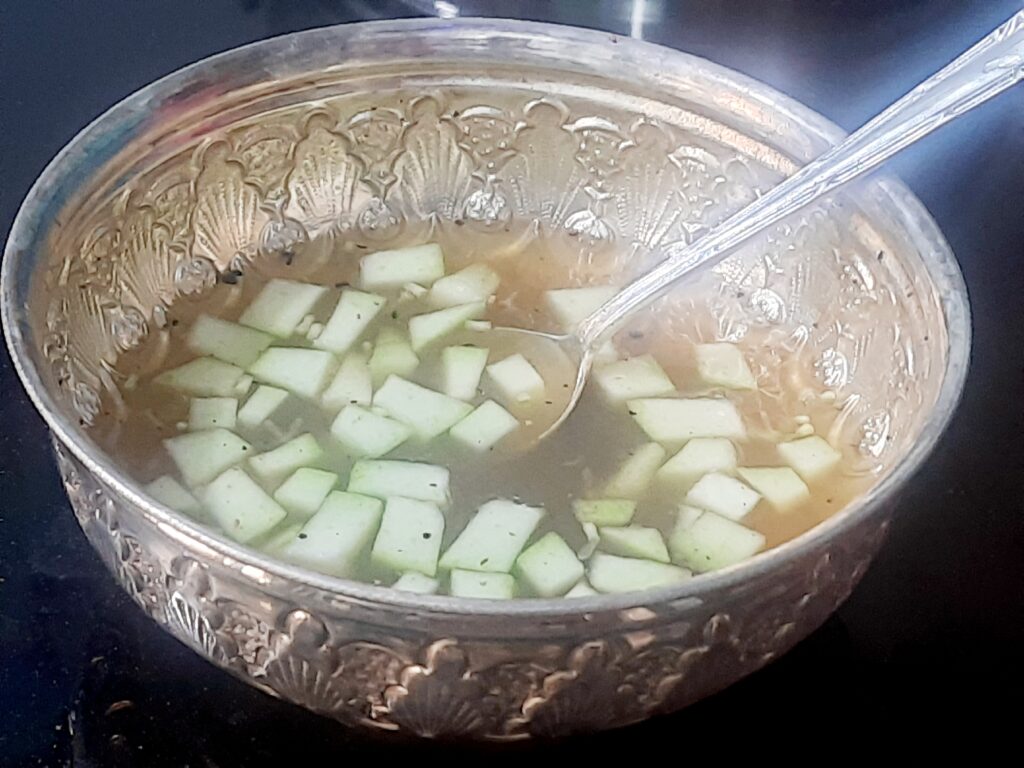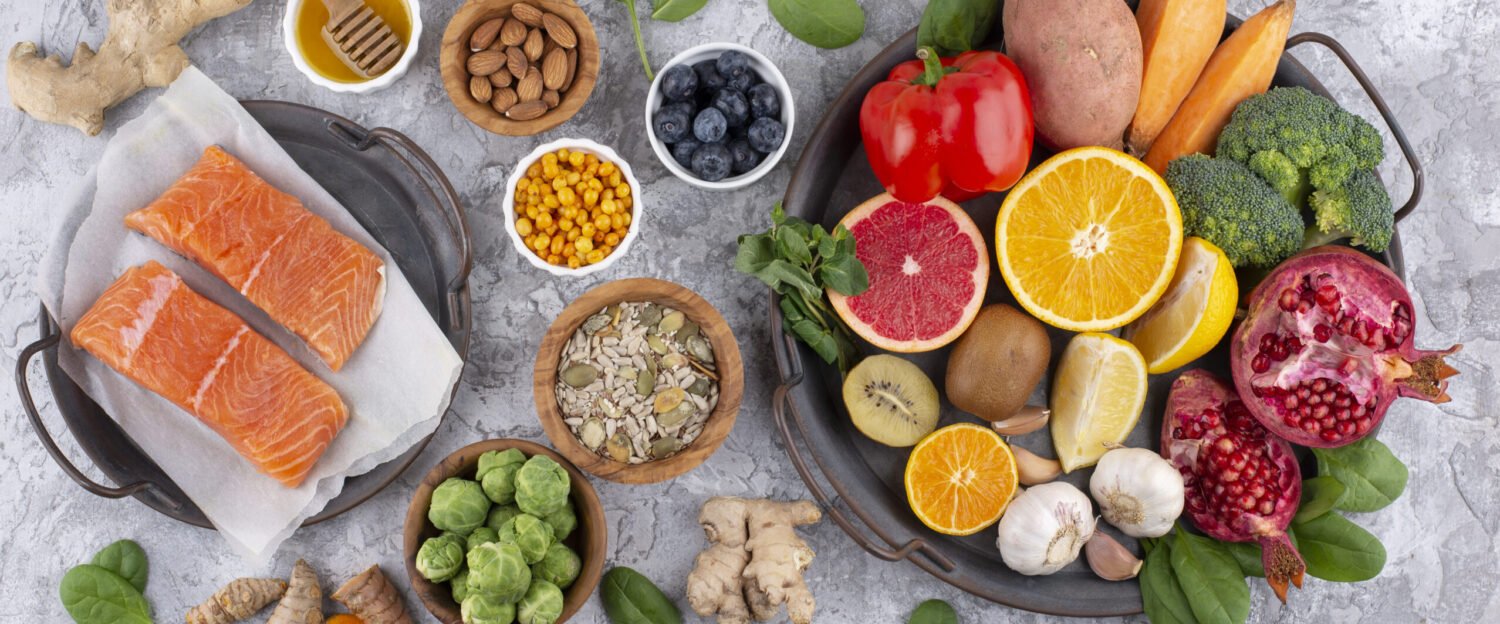
Table of Contents
About UGADI Pachadi/Pickle:
Ugadi Pachadi holds a special place in the hearts of those celebrating the onset of a new year in South India. This unique dish, representing the harmonious blend of six distinct tastes, is a culinary marvel that encapsulates the diverse flavors of life. The concept of “Six Tastes,” known as Shad Rasa in Ayurveda, is a fundamental principle in traditional Indian philosophy and medicine. These tastes represent specific flavors perceived by the human palate, and each is associated with distinct elements, energies, and effects on the body and mind.
Ugadi Pachadi 6 flavors Health Benefits:
Here’s an exploration of the meanings behind each of the six tastes:
- Sweet (Madhura): This taste is linked with the elements of Earth and Water. It provides nourishment, satisfaction, and a sense of grounding. Foods with a sweet taste include Jaggery, sugars, fruits.
- Sour (Amla): The sour taste is associated with the elements of Earth and Fire. It stimulates digestion, increases salivation, and aids in cleansing. Foods with a sour taste include citrus fruits, yogurt.
- Salty (Lavana): Linked with the elements of Water and Fire, the salty taste aids in fluid balance, electrolyte regulation, and enhances taste perception. Foods with a salty taste include salt, sea vegetables.
- Bitter (Tikta): The bitter taste is associated with the elements of Ether and Air. It detoxifies, purifies, and has a cooling effect on the body. Foods with a bitter taste include leafy bitter gourds.
- Pungent (Katu): Linked with Fire and Air, the pungent taste stimulates digestion, increases metabolism, and induces warmth. Foods with a pungent taste include spicy peppers, ginger, garlic, and onions.
- Astringent (Kashaya): This taste is associated with the elements of Air and Earth. It provides a drying effect and helps in toning tissues. Foods with an astringent taste include legumes, green tea, and some fruits like apples and pomegranates.
Balancing these six tastes in one’s diet is considered important in Ayurveda for maintaining overall health and well-being. Each taste is believed to have specific effects on the body’s doshas (Vata, Pitta, and Kapha) and can be used to create dietary choices that support physical and mental harmony.
Ugadi Pachadi Ingredients:
Coming to the Ugadi pachadi recipe, first flavor – hot so used Pepper powder, can also replace with other alternatives red chilli and green chilli, second taste- jaggery for sweet, can use sugar and honey also, third taste- Salt for salty taste, fourth taste- Mango for tangy, fifth Flavor Tamarind for sour, Finally sixth flavor neem flowers for bitter. Many like to add coconut, banana, roasted chana as optional-as per your taste. As per choice, blend the mixture or else chop them small and mix in a bowl.
Related Posts:
- Rice Paramanam
- Vada Pappu
- Salividi
- Panakam
Ugadi Pachadi Recipe:
Ugadi Pachadi
Equipment
- Bowl
Ingredients
- Raw mango – 1 small chopped
- Neem flowers – 1tsp
- Tamarind juice – 2tsp
- Banana – 1tsp optionaL
- Coconut – 1tsp optional
- Jaggery – 2tsp
- Salt – pinch
- Green chilli/blackpepper /red chillies- 1/4tsp
Instructions
- Begin by carefully cleaning and draining the neem flowers, ensuring they are free of any impurities.
- Chop the raw mango into small, bite-sized pieces, infusing a tangy essence into the dish.
- Slice the banana into rounds, adding a touch of natural sweetness and a creamy texture.
- In a mixing bowl, blend the tamarind juice with water, creating a zesty base for the ugadi Pachadi.
- Incorporate the banana slices, chopped raw mango, and cleaned neem leaves into the mixture, creating a vibrant medley of flavors and textures.
- Introduce the jaggery powder and a pinch of salt, striking a balance between the sweet, sour, and bitter elements.
- Depending on your preference, you have the option to blend the mixture for a smoother texture. For a hint of spice, add green chilli; otherwise, a touch of pepper powder imparts a subtle warmth.
- Give the blend a gentle stir, allowing the ingredients to mingle and form a harmonious union.
- Serve this delectable Ugadi Pachadi, a testament to the rich tapestry of tastes that life brings forth.
- Embrace the new year with this symbolic dish, savoring the myriad flavors it represents – sweet, sour, bitter, spicy, tangy, and salty.
Nutrition:
The nutritional values of Ugadi Pachadi can vary based on the specific recipe and portion size. Please note that these values are approximate and can vary based on factors like the specific ingredients used and their quantities. Additionally, the values provided here are for a standard preparation of Ugadi Pachadi and may not include any additional variations or ingredients that could be added in specific recipes. Here’s a general breakdown of the key components and their approximate values per 100 grams:
- Calories: 70-90 kcal
- Protein: 1-2 grams
- Carbohydrates: 15-20 grams
- Sugars: 10-15 grams
- Dietary Fiber: 2-3 grams
- Fat: 0.5-1 gram
- Saturated Fat: 0 grams
- Monounsaturated Fat: 0 grams
- Polyunsaturated Fat: 0 grams
- Sodium: 5-10 milligrams
- Potassium: 200-300 milligrams
- Calcium: 20-30 milligrams
- Iron: 1-2 milligrams
- Vitamin C: 10-15 milligrams
- Vitamin A: 50-100 micrograms
- Folate (B9): 10-20 micrograms
